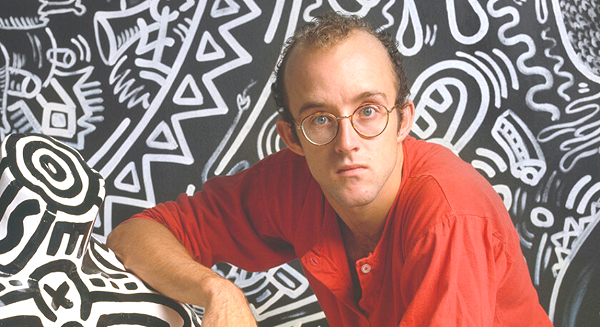THIS WEEK’S MUSE
KEITH HARING, ARTIST

KEITH
“Art should be something that liberates your soul, provokes the imagination and encourages people to go further.”
Keith Haring was an American artist whose bold, pop art style emerged from the New York City graffiti subculture of the early 1980s. Subsequently, Haring achieved international recognition, participating in numerous exhibitions throughout the decade. He died in 1990 in Greenwich Village aged 31.
Haring first received public attention with his spontaneous graffiti drawings on the city subways. He considered the subways to be his “laboratory,” a place where he could experiment and create his artwork; “the perfect place to draw.”
He moved to New York in 1978, producing mostly abstract paintings through his studies at the School of Visual Arts. He noticed that when the rental period on advertising posters on the subway expired, the transit authority covered them with black paper. This created “irresistible surfaces” on which to draw, and soon his white chalk drawings were popping up all over the subway network.
“The public needs art – and it is the responsibility of a ‘self-proclaimed artist’ to realize that the public needs art, and not to make bourgeois art for a few and ignore the masses.”
By his own estimate, between 1981 and 1985 he drew over 5,000 of these subway images. As fast as the transit authority would remove them, Haring would redraw them – on the latest “fresh black canvasses.”
His subject matter was an evolved repertoire of simple recurrent images that travelers all over the city began to recognize. Flying saucers with beams of light, energized radiant babies, howling dogs, tiny repeated human figures, composite creatures with televisions for heads. He put the repeating figures everywhere and they became his consuming passion.
Diverse influences—writer William Burroughs, artists like Warhol and Basquiat, Hip Hop imagery, Dr. Seuss, Looney Tunes cartoon—motivated Haring’s struggles to “understand the postmodern condition.”
Some of his subway drawings had obvious political themes, while others had sexual or social activism references – advocating safe sex and AIDS awareness.
Haring’s artwork utilizes a limited palette, typically of 4 or 5 colors, and his figures are characterized by bold black outlines with a prevalence of vector lines, like those used in cartoons, to create a sense of dynamic movement. These early works were done quickly, with vitality and energy winning over detail and accuracy.
“The dripping… well, if it happens, it happens; it does not take anything from the work. The dripping just proves that you were not trying to control the work, but the work was developing by itself and if it drips, it’s a natural part in the evolution of the work.”
His subway art exemplifies a wider artistic philosophy to connect to an audience and his wish to generate a broad appeal. “I am interested in making art to be experienced and explored by as many individuals as possible,” he said, “with as many different individual ideas about the given piece with no final meaning attached.
The viewer creates the reality, the meaning, the conception of the piece.
HAPPENING
Tuesday, May 30, 5:30–7:30pm

HYDRANGEA SUCCESS SERIES: CONTAINER GROWING
With Mal Condon
Color and style blend with charming blossoms.
Price: $40
